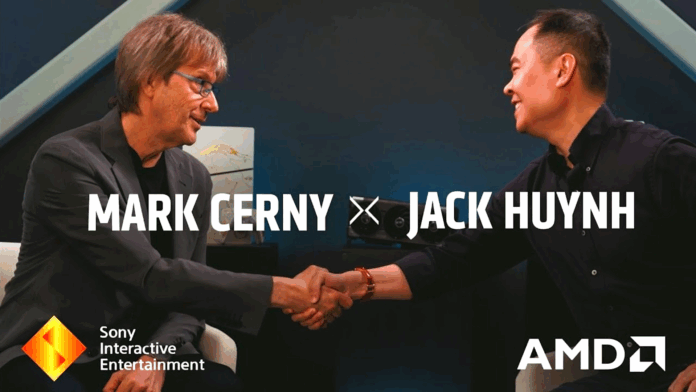Sony and AMD announce three technologies that are set to benefit the PS6 in particular – but not only that.
Sony and AMD are setting the course for the next generation of consoles.
In a joint presentation, PlayStation system architect Mark Cerny and AMD vice president Jack Huynh unveiled three technologies that are set to form the foundation of the PlayStation 6.
Background: “Project Amethyst” as the basis for the future of PlayStation
The new technologies are the preliminary result of several years of cooperation between Sony and AMD, which is running under the name “Project Amethyst.”
The partnership, announced at the end of 2024, had two primary goals: to develop better hardware architecture for machine learning and high-quality CNNs (convolutional neural networks) for game graphics.
”Neural Arrays”: Efficient AI upscaling
The first of the ideas presented is called “Neural Arrays” and is intended to improve the efficiency of upscalers such as AMD FSR and Sony PSSR.
This is to be achieved through a restructured GPU architecture: Until now, each individual compute unit (CU) worked in isolation. The “Neural Arrays,” however, are designed to intelligently network multiple CUs, connecting them to form a “focused AI engine.”
- In practice, this should result in PSSR and similar technologies working faster while maintaining the same quality, or achieving better results in the same amount of time—the change is intended to reduce overhead and improve scalability.
- In addition, Huynh promises that new “neural arrays” will offer completely new features that will take cinematic rendering to a new level. At the same time, denoising algorithms, which are essential for ray and path tracing, should also be able to work more efficiently.
“Radiance Cores” as dedicated RT blocks
With the “Radiance Cores” also presented, Sony and AMD want to give ray tracing calculations a boost. These are dedicated hardware blocks to which the computing work for ray traversal is outsourced.
- Until now, standard shader units had to perform the complex search for intersections between millions of light rays and millions upon millions of triangles – at the same time as the actual shading with texture and lighting information. In the future, the “Radiance Cores” will take over the search for intersections.
- In theory, separating these processes offers several performance advantages: According to Cerny and Huynh, the CPU and GPU can focus on their strengths – geometry and simulation on the CPU, shading and lighting on the GPU.
- In addition, the Radiance Cores work independently of the shader cores, which in turn should unlock further performance within the graphics unit.
“Universal Compression” as a response to bandwidth bottlenecks
The third idea to emerge from “Project Amethyst” goes by the name of “Universal Compression” and is intended to alleviate a bottleneck in modern GPU architecture: memory bandwidth.
Both the PS5 and the Pro version only compress specific data types such as textures, while all other information is transferred uncompressed between the GPU and memory. Universal Compression, on the other hand, is designed to evaluate all data transferred to memory and compress it if necessary.
- This logically reduces the bandwidth used by the memory, which in turn increases efficiency.
- According to Cerny, this approach could even lead to GPUs exceeding their theoretical specifications in terms of memory bandwidth.
Not just for PlayStation 6? AMD keeps all options open
However, the three technologies presented do not necessarily have to end up on the PlayStation 6 – quite the contrary. Instead, Huynh promises to make all three innovations available “across all gaming platforms.”
In this context, that doesn’t just have to include stationary consoles, but can also refer to a possible Steam Deck 2 – Valve is known to be waiting for a “generational leap” – as well as mobile and dedicated gaming GPUs.
First and foremost, however, the upcoming PlayStation 6 is likely to benefit, which, according to Cerny, should be coming our way “in a few years.” However, the PlayStation chief architect did not reveal a more specific release period.


